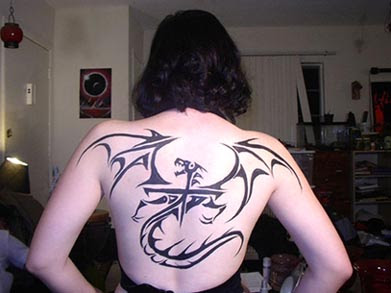

 Tag : dragon tattoo designs,jade dragon tattoo,japanese dragon tattoo art,tribal dragon tattoo,chinese dragon tattoo,red dragon tattoo,free tribal dragon tattoo designs,puff the magic dragon tattoo,japanese dragon tattoo,black dragon tattoo
Tag : dragon tattoo designs,jade dragon tattoo,japanese dragon tattoo art,tribal dragon tattoo,chinese dragon tattoo,red dragon tattoo,free tribal dragon tattoo designs,puff the magic dragon tattoo,japanese dragon tattoo,black dragon tattoo


 Tag : dragon tattoo designs,jade dragon tattoo,japanese dragon tattoo art,tribal dragon tattoo,chinese dragon tattoo,red dragon tattoo,free tribal dragon tattoo designs,puff the magic dragon tattoo,japanese dragon tattoo,black dragon tattoo
Tag : dragon tattoo designs,jade dragon tattoo,japanese dragon tattoo art,tribal dragon tattoo,chinese dragon tattoo,red dragon tattoo,free tribal dragon tattoo designs,puff the magic dragon tattoo,japanese dragon tattoo,black dragon tattoo
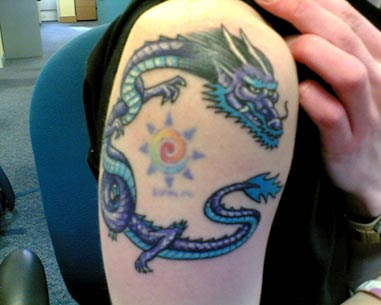
 This Dragon tattoo on the arm of the person is a representation of today’s womanhood. Today’s woman is independent, educated and fights her own battles. It also reflects the very strong and protective quality of a woman.
This Dragon tattoo on the arm of the person is a representation of today’s womanhood. Today’s woman is independent, educated and fights her own battles. It also reflects the very strong and protective quality of a woman.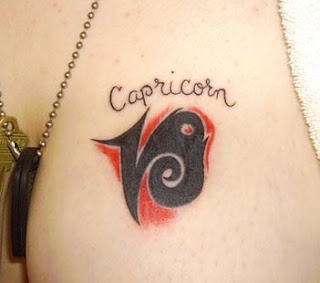
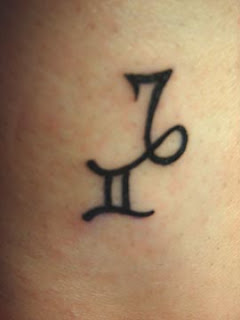 Capricorn placed tenth in line of the zodiac signs, is portrayed as a combination of goat and fish. Capricorn is an earth mark, with the planet Saturn ruling it.
Capricorn placed tenth in line of the zodiac signs, is portrayed as a combination of goat and fish. Capricorn is an earth mark, with the planet Saturn ruling it.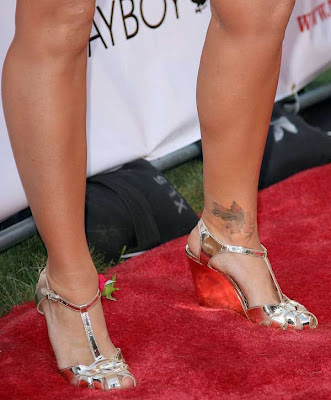


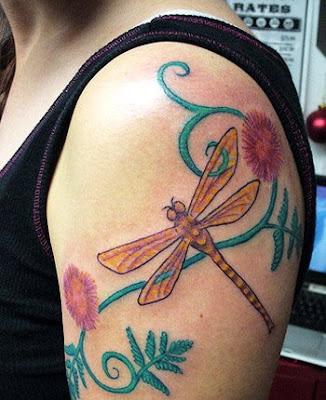
 Dream and set it free. It will fly away and come back to you becoming true. The dragonfly tattoo has this message for the lady adorning it. The two dragonflies on the lower back of the woman encompass her entire self.
Dream and set it free. It will fly away and come back to you becoming true. The dragonfly tattoo has this message for the lady adorning it. The two dragonflies on the lower back of the woman encompass her entire self.
 This holds true for our dear and gorgeous American model turned actress Megan Denise Fox. Megan has chosen her skin as a canvas and likes to demonstrate her artistic liking by getting her body tattooed.
This holds true for our dear and gorgeous American model turned actress Megan Denise Fox. Megan has chosen her skin as a canvas and likes to demonstrate her artistic liking by getting her body tattooed. tattoo pie
tattoo pie
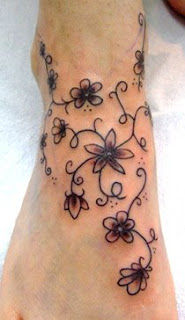 A flower has always been an object of affection, especially while addressing a woman. It has always added grace and beauty to every surrounding and the person it has been a part of, quite like the woman herself.
A flower has always been an object of affection, especially while addressing a woman. It has always added grace and beauty to every surrounding and the person it has been a part of, quite like the woman herself.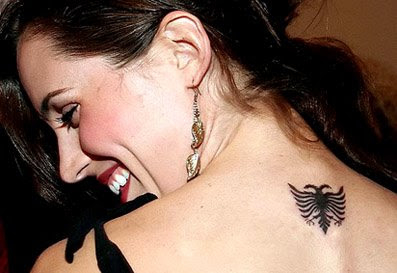
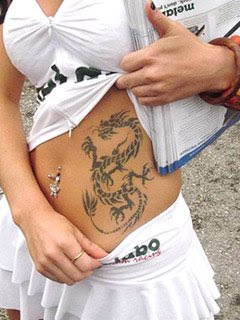 The common understanding of the female persona, so vividly described by many, yet so misunderstood. Yes, there is another side of a woman’s femininity that talks about neither of fragility or submission but of fierceness and brutality.
The common understanding of the female persona, so vividly described by many, yet so misunderstood. Yes, there is another side of a woman’s femininity that talks about neither of fragility or submission but of fierceness and brutality.

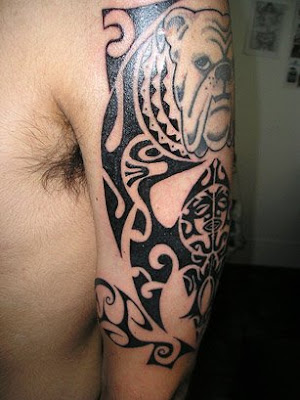
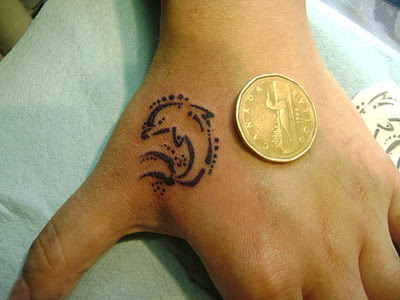
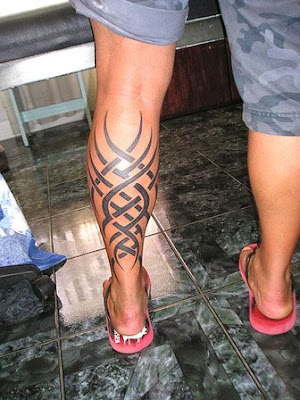 Tag : dolphin tattoo designs,tribal dolphin tattoo,free dolphin tattoo designs,dolphin tattoo flash,lower back dolphin tattoo,dolphin tattoo art,celtic dolphin tattoo,dolphin tattoo images,butterfly dolphin tattoo,tribal dolphin tattoo designs
Tag : dolphin tattoo designs,tribal dolphin tattoo,free dolphin tattoo designs,dolphin tattoo flash,lower back dolphin tattoo,dolphin tattoo art,celtic dolphin tattoo,dolphin tattoo images,butterfly dolphin tattoo,tribal dolphin tattoo designs
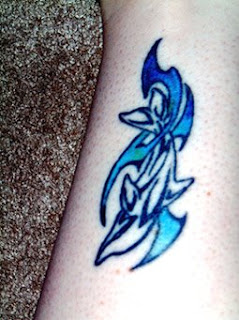 The Dolphin tattoo is a signage of love and protection. Combined very interestingly with the yin and yang, it is symbolizing togetherness between two loved ones.
The Dolphin tattoo is a signage of love and protection. Combined very interestingly with the yin and yang, it is symbolizing togetherness between two loved ones.
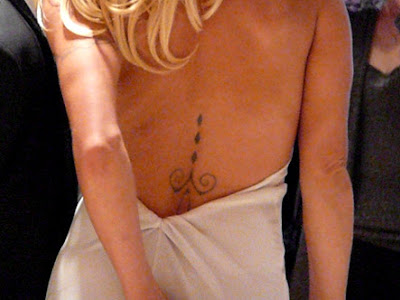
 Tag : celebrity tattoos,celebrity tattoo designs,female celebrity tattoos,celebrity tattoo Denver,celebrity tattoo artist,Hollywood celebrity tattoo,famous celebrity tattoos,celebrity tattoo colorado,real celebrity tattoos,eva longoria celebrity tattoos
Tag : celebrity tattoos,celebrity tattoo designs,female celebrity tattoos,celebrity tattoo Denver,celebrity tattoo artist,Hollywood celebrity tattoo,famous celebrity tattoos,celebrity tattoo colorado,real celebrity tattoos,eva longoria celebrity tattoos


 Tag : toe ring tattoos,toe ring tattoo designs,toe ring tattoo illusion,toe ring tattoos flower,free toe ring tattoo designs,toe ring tattoos anklets,toe ring tattoos designs,toe ring tattoos barbells,toe ring tattoo design
Tag : toe ring tattoos,toe ring tattoo designs,toe ring tattoo illusion,toe ring tattoos flower,free toe ring tattoo designs,toe ring tattoos anklets,toe ring tattoos designs,toe ring tattoos barbells,toe ring tattoo design
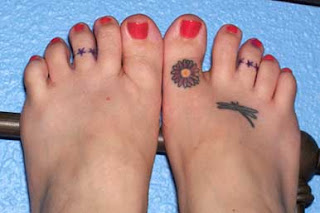
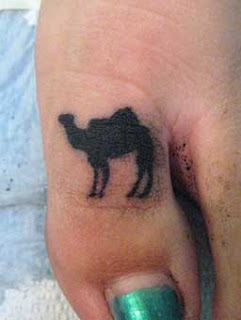 The dawn and dusk. Day and Night. It is all what a person lives through. Inking the dichotomy of life, the Toe Ring Tattoo showcases the two powerful extremes by inking a burning Sun on one toe and the cold and peaceful moon.
The dawn and dusk. Day and Night. It is all what a person lives through. Inking the dichotomy of life, the Toe Ring Tattoo showcases the two powerful extremes by inking a burning Sun on one toe and the cold and peaceful moon.


The main ingredient used for these temporary tattoos and/or Mehndi (the traditional art of henna painting in India and the Middle East) is henna. Pure, natural henna gives a chocolate brown or deep mahogany red stain on the hands and feet. On other parts of the body the stain can be tea-coloured; the shades can vary depending on the individual and other factors such as skin colour. Henna's dye component, hennotannic acid, does not pass through into the dermis (living cells) layer of the skin, it only stains the dead cells in the epidermis. Hennotannic acid naturally makes the brick/red/brown stains and it usually takes many hours to get a good henna stain on the skin, and is relatively safe. Allergic and irritant reactions are very rare. To make the dye, henna leaves are dried and finely ground and the powder is filtered; the artist then mixes the fine powder with an oil (such as eucalyptus oil) and other liquids (lemon, water, or tea), making a thick paste. This may sometimes appear to be black when wet and freshly applied to the skin, but on closer inspection is unlikely to be so.
Henna, however, is not black and most "black henna" as it is called is natural henna adulterated with a toxic chemical dye to make it black and to speed up the dyeing process. There are more and more people who are having problems of skin reactions with so called "black henna" within Indonesia. The fact of the matter is that it is not the henna that is the problem but the toxic dye called para-phenylenediamine or PPD for short, that people are adding to the henna to produce the black stain on the skin. PPD may also be used on its own to stain skin black and it stains the skin absolutely black within 2 hours and the stain can last easily 2 weeks. PPD penetrates deep into the skin, reaching the dermis and passing into the blood stream and can be dangerous to your system and not only affect the skin where it has been applied.
While there are a few safe products out there, most "black henna" contains PPD, and is found in many black hair dyes; there are some black (and other coloured) henna stains that claim not to contain PPD but rather use other non-toxic colourants; individuals would need to check on the actual ingredients to determine this and the safety thereof.
The skin reactions to PPD "black henna" frequently resemble the photograph that has kindly been provided by a friend. P-Phenylenediamine can also cause delayed type hypersensitivity reactions on the skin exactly where the PPD "black henna" temporary tattoo was applied. Sometimes the reaction is mild, with a raised, itchy area where the "black henna" pattern was. More severe reactions include pustules, blisters, oozing sores, intense itching, and these often leave long-term scars on people. The onset of the reaction generally begins 1 day to 3 weeks after the PPD "black henna" has been applied. Sometimes the blisters come up while the black pattern is still visible, and other times the blisters appear when the pattern has faded. If someone has a hypersensitivity reaction one time to PPD "black henna", it will be more severe with each subsequent exposure.
It is of no use to "patch test" PPD "black henna" to see if you're going to have oozing  sores and blisters, because the reaction can occur up to 6 weeks after exposure. Also, skin hypersensitivity reactions will be increasingly likely with each exposure to PPD. A person may have one PPD "black henna" tattoo with no reaction, but may have a severe reaction with the next PPD "black henna" tattoo. Even if there is no skin reaction to PPD, it is still a transdermal toxin and can be harming your internal organs without showing lesions on your skin!
sores and blisters, because the reaction can occur up to 6 weeks after exposure. Also, skin hypersensitivity reactions will be increasingly likely with each exposure to PPD. A person may have one PPD "black henna" tattoo with no reaction, but may have a severe reaction with the next PPD "black henna" tattoo. Even if there is no skin reaction to PPD, it is still a transdermal toxin and can be harming your internal organs without showing lesions on your skin!
Although rare, severe cases of immediate type hypersensitivity to PPD have been described in which the patients developed severe edema (swelling), irritation of the eyes and face and also difficulty in breathing.
PPD scarring may be permanent and post-inflammatory hypopigmentation may remain at the tattoo site (this means after the scarring and blistering has subsided, a long-lasting white ghost image of the tattoo remains).
If we cannot control the use of these toxic chemicals, there are ways to protect yourself from black henna and find responsible, traditional henna artists.
Unfortunately, it is usually our children who are the ones that wish to have the tattoos, but are also the ones who are particularly at risk.
How to recognise PPD-based "black henna":



But just two days later, the tattoo of a cute little bug had swelled into an itchy, bubbling blister on Kim’s upper right arm.
The American Academy of Dermatology recently issued a warning that a chemical found in black henna tattoos can cause a severe allergic reaction, causing the skin to redden, swell and blister — but only where the henna is applied, leaving people with bubbly blisters in shapes like suns, stars and flowers.
As henna body art has become mainstream in the last few years, often peddled at summer carnivals and concerts, dermatologists report increasingly treating patients, especially teen girls and young women, with these often elaborate looking allergic reactions.
“Just because they’re temporary, people think they’re safe,” says Dr. Sharon E. Jacob, a dermatologist at the University of California, San Diego.
While true henna is made from harmless plants, black henna uses a chemical called para-phenylenediamine, or PPD, which makes the tattoo dry quickly and last longer — and in some cases, that’s much, much longer.
“These skin allergies themselves are not dangerous,” says Dr. Colby Evans, a dermatologist in private practice in Austin, Texas. “But they can cause scarring or darkness to the skin that can be permanent."
Despite the potential for creating a permanent souvenir from that trip to Mexico, the scarring generally will go away on its own within a few weeks. But it's almost always odd-looking. This week, the New England Journal of Medicine published Evans’ account of a particularly intense case: A 19-year-old Kuwaiti woman Evans treated after she returned from a wedding, where she had black henna applied to her forearms, hands and fingers. A week later, her swirly, flowery henna was overwritten with a swirly, flowery blister.
Last year, Evans also treated a young man with a similar allergic reaction to henna that took an even more bizarre form: a blister on the back of his neck in the perfect shape of an eagle.
In both cases, Evans prescribed steroid creams to bring the swelling down.
Lifelong allergies to some medications
But Evans and other dermatologists warn that just one bad reaction to black henna can be enough to cause permanent sensitivity to PPD, and that allergy can cross-react with chemical relatives in certain anesthetics and medications for heart disease, hypertension and diabetes.
“The allergy you can develop is lifelong,” says Jacob. But she’s found that people, especially teens, are generally unimpressed by her warnings of reactions to medication, so she reserves this for the kicker: “It may mean you can never dye your hair again.”
While PPD is used in most hair dyes, allergic reactions aren’t very common because it isn't applied directly to the skin, and in black henna the concentration of PPD is 10 times higher, Jacob estimates. But a PPD sensitivity could cause an allergic reaction after even the slightest contact with the chemical.
“This was a little booth set up at the hotel pool, and I didn’t think anything of it,” she says.
Experts say there are a few easy ways to tell the difference between true henna and black henna. For one, henna is never black — it’s red, which darkens to a brownish color on the skin as it dries. Real henna starts to fade away within a few days, so be wary of a henna tattoo artist who boasts of tattoos that will last any longer than that.
But both mom and daughter Geiger aren’t taking any more chances; they’re staying far away from all things henna. “It looks so harmless," Debbe Geiger says, "but you have to watch these ingredients they’re using.”


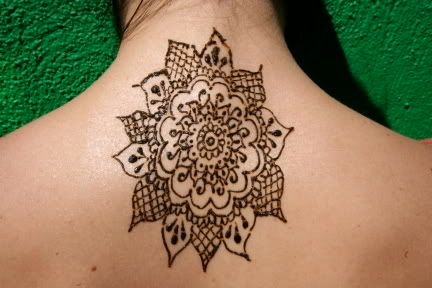
Henna or Hina (Lawsonia inermis, syn. L. alba) is a flowering plant, the sole species in the genus Lawsonia in the family Lythraceae. It is native to tropical and subtropical regions of Africa, southern Asia, and northern Australasia in semi-arid zones. Henna is a tall shrub or small tree, 2–6 m high. It is glabrous, multibranched with spine tipped branchlets. Leaves are opposite, entire, glabrous, sub-sessile, elliptical, and broadly lanceolate (1.5–5.0 cm x 0.5–2 cm), acuminate, having depressed veins on the dorsal surface. During the onset of precipitation intervals, the plant grows rapidly; putting out new shoots, then growth slows. The leaves gradually yellow and fall during prolonged dry or cool intervals. Henna flowers have four sepals and a 2 mm calyx tube with 3 mm spread lobes. Petals are obvate, white or red stamens inserted in pairs on the rim of the calyx tube. Ovary is four celled, style up to 5 mm long and erect. Fruits are small, brownish capsules, 4–8 mm in diameter, with 32–49 seeds per fruit, and open irregularly into four splits.[1] Lawsone content in leaves is negatively associated with the number of seeds in the fruits.[2]
Henna, Lawsonia inermis, produces a red-orange dye molecule, lawsone. This molecule has an affinity for bonding with protein, and thus has been used to dye skin, hair, fingernails, leather, silk and wool. Henna's indigenous zone is the tropical savannah and tropical arid zone, in latitudes between 15° and 25° N and S from Africa to the western Pacific rim, and produces highest dye content in temperatures between 35°C and 45°C. It does not thrive where minimum temperatures are below 11°C. Temperatures below 5°C will kill the henna plant. The dye molecule, lawsone, is primarily concentrated in the leaves, and is in the highest levels in the petioles of the leaf. Products sold as "black henna" or "neutral henna" are not made from henna, but may be derived from indigo (in the plant Indigofera tinctoria) or Cassia obovata, and may contain unlisted dyes and chemicals.[3]
Henna is commercially cultivated in western India, Pakistan, Morocco, Yemen, Iran, Afghanistan, Somalia, Sudan and Libya. Presently the Pali district of Rajasthan is the most heavily cultivated henna production area in India, with over 100 henna processors operating in Sojat City.
Though henna has been used for body art and hair dye since the Bronze Age, henna has had a recent renaissance in body art due to improvements in cultivation, processing, and the diasporas of people from traditional henna using regions. [4]
The word "henna" comes from the Arabic name for Lawsonia inermis, pronounced /ħinnaːʔ/ or colloquially /ħinna/.
In the Bible's Song of Songs and Song of Solomon, henna is referred to as Camphire.

In the Indian subcontinent, there are many variant words such as Mehndi in North India, Pakistan and Bangladesh. In Telugu (India, Malaysia, USA), it is known as Gorintaaku. In Tamil (South India, Singapore, Malaysia, Sri Lanka) it is called "Marudhaani" and is used as ground fresh leaves rather than as dried powder. It is used in various festivals and celebrations and used by women and children. It is left on overnight and will last one month or more depending on the plant and how well it was ground and how long it is left on.
Henna has many traditional and commercial uses, the most common being as a dye for hair, skin and fingernails, as a dye and preservative for leather and cloth, and as an anti-fungal. Henna flowers have been used to create perfume since ancient times, and henna perfume is experiencing a resurgence on the Internet.[5] Henna was used as a hair dye in Indian court records around 400 CE,[6] in Rome during the Roman Empire, and in Spain during Convivienca.[7] It was listed in the medical texts of the Ebers Papyrus (16th c BCE Egypt)[8] and by Ibn Qayyim al-Jawziyya (14th c CE (Syria and Egypt) as a medicinal herb.[9] In Morocco, wool is dyed and ornamented with henna, as are drumheads and other leather goods. Henna will repel some insect pests and mildew.
The United States Food and Drug Administration has not approved henna for direct application to the skin. It is unconditionally approved as a hair dye, and can only be imported for that purpose.[10] Henna imported into the USA which appears to be for use as body art is subject to seizure, and at present it is illegal to use henna for body art in the U.S.,[11] though prosecution is rare. The fast black stains of “black henna” are not made with henna, but are from p-phenylenediamine. This can cause severe allergic reactions and permanent scarring. No henna can make a black stain on a torso in ½ hour. P-phenylenediamine can stain skin black quickly, but the FDA specifically forbids PPD to be used for that purpose.
Henna body art is made by applying henna paste to the skin: the lawsone in the paste migrates into the outermost layer of the skin and makes a red-brown stain.
Whole, unbroken henna leaves will not stain the skin. Henna will not stain skin until the lawsone molecules are made available (released) from the henna leaf. Fresh henna leaves will stain the skin if they are smashed with a mildly acidic liquid. This will stain skin within moments, but it is difficult to form intricate patterns from coarse crushed leaves. Dried ground, sifted henna leaves are easily worked into a paste that can be used to make intricate body art. Commercially available henna powder is made by drying the henna leaves and milling them to powder, then the powder is sifted. This powder is mixed with lemon juice, strong tea, or other mildly acidic liquids. Essential oils with high levels of "terps", monoterpene alcohols such as tea tree, eucalyptus, cajeput, or lavender will improve skin stain characteristics. The henna mix must rest for 6 to 12 hours so the leaf cellulose is dissolved, making the lawsone available to stain the skin. This is mixed to a toothpaste consistency and applied with a one of many traditional tools, including resist techniques, shading techniques, and thicker paste techniques, or the modern cellowrap cone.
Once applied to the skin, lawsone molecules gradually migrate from the henna paste into the outer layer of the skin. Though henna's lawsone will stain the skin within minutes, the longer the paste is left on the skin, the more lawsone will migrate. Henna paste will yield as much dye as the skin can easily absorb in less than eight hours. Henna tends to crack and fall off the skin during these hours, so it is often sealed down by dabbing a sugar/lemon mix over the dried paste, or simply adding some form of sugar to the paste. This also adds to the colour of the end result, increasing the intensity of the shade.
When the paste has fallen off the skin or been removed by scraping, the stain will be orange, but should darken over the following three days to a reddish brown. Soles and palms have the thickest layer of skin and so take up the most lawsone, and take it to the greatest depth, so that hands and feet will have the darkest and most long-lasting stains. Steaming or warming the henna pattern will darken the stain, either during the time the paste is still on the skin, or after the paste has been removed. Chlorinated water and soaps may spoil the darkening process: alkaline may hasten the darkening process. After the stain reaches its peak color it will appear to fade. The henna stain is not actually fading, the skin is exfoliating: the lower, less stained cells, rise to the surface, until all stained cells are shed.

The different words for henna in ancient languages imply that henna had more than one point of discovery and origin, and different pathways of daily and ceremonial use.
Henna has been used to adorn young women’s bodies as part of social and holiday celebrations since the late Bronze Age in the eastern Mediterranean. The earliest text mentioning henna in the context of marriage and fertility celebrations comes from the Ugaritic legend of Baal and Anath [12], which has references to women marking themselves with henna in preparation to meet their husbands, and Anath adorning herself with henna to celebrate a victory over the enemies of Baal. Wall paintings excavated at Akrotiri (dating prior to the eruption of Thera in 1680 BCE) show women with markings consistent with henna on their nails, palms and soles, in a tableau consistent with the henna bridal description from Ugarit [13] Many statuettes of young women dating between 1500 and 500 BCE along the Mediterranean coastline have raised hands with markings consistent with henna. This early connection between young, fertile women and henna seems to be the origin of the Night of the Henna, which is now celebrated world-wide.
The Night of the Henna was celebrated by most groups in the areas where henna grew naturally: Jews, [14], Muslims[15], Hindus, Christians and Zoroastrians, among others, all celebrated marriages by adorning the bride, and often the groom, with henna.
Across the henna-growing region, Purim [14], Eid[16], Diwali[17], Karva Chauth, Passover, Nowruz, Mawlid, and most saints’ days were celebrated with some henna. Favorite horses, donkeys, and salukis had their hooves, paws, and tails hennaed. Battle victories, births, circumcision, birthdays, Zar, as well as weddings, usually included some henna as part of the celebration. When there was joy, there was henna, as long as henna was available. [15]
Henna was regarded as having “Barakah”, blessings, and was applied for luck as well as joy and beauty.[15] Brides typically had the most henna, and the most complex patterns, to support their greatest joy, and wishes for luck. Some bridal traditions were very complex, such as those in Yemen, where the Jewish bridal henna process took four or five days to complete, with multiple applications and resist work.
The fashion of "Bridal Mehndi" in Northern Libya and in North Indian diasporas is currently growing in complexity and elaboration, with new innovations in glitter, gilding, and fine-line work. Recent technological innovations in grinding, sifting, temperature control, and packaging henna, as well as government encouragement for henna cultivation, have improved dye content and artistic potential for henna.
Though traditional henna artists were Nai caste in India, and barbering castes in other countries (lower social classes), talented contemporary henna artists can command high fees for their work. Women in countries where women are discouraged from working outside the home can find socially acceptable, lucrative work doing henna. Morocco, Mauritania[18], Yemen, Libya, Somalia, Sudan, as well as India and many other countries have thriving women’s henna businesses. These businesses are often open all night for Eids, Diwali and Karva Chauth, and many women may work as a team for a large wedding where hundreds of guests will be hennaed as well as the bride and groom.
Though user accounts cite few, if any, negative effects of natural henna paste, pre-mixed henna body art pastes may have ingredients added to darken stain, or to alter stain color. The health risks involved in pre-mixed paste can be significant. The FDA considers these to be adulterants and therefore illegal for use on skin.[19] Some pastes have been found to include: silver nitrate, carmine, pyrogallol, disperse orange dye, and chromium. These have been found to cause allergic reactions, chronic inflammatory reactions, or late-onset allergic reactions to hairdressing products and textile dyes.
“Black Henna” is a misnomer arising from imports of plant-based hair dyes into the West in the late 19th century. Partly fermented, dried indigo was called “black henna” because it could be used in combination with henna to dye hair black. This gave rise to the belief that there was such a thing as “black henna” which could dye skin black. Indigo will not dye skin black. Pictures of indigenous people with black body art (either alkalized henna or from some other source) also fed the belief that there was such a thing as “black henna.”
In the 1990s, henna artists in Africa, India, the Arabian Peninsula and the West began to experiment with para-phenylenediamine (PPD) based black hair dye, applying it as a thick paste as they would apply henna, in an effort to find something that would quickly make jet black temporary body art. PPD can cause severe allergic reactions, with blistering, intense itching, permanent scarring, and permanent chemical sensitivities[24] [25]. Estimates of allergic reactions range between 3% and 15%. Henna does not cause these injuries[26]. Henna boosted with PPD can cause lifelong health damage. [27]
Para-phenylenediamine is illegal for use on skin in western countries, though enforcement is lax. When used in hair dye, the PPD amount must be below 6%, and application instructions warn that the dye not touch the scalp and the dye must be quickly rinsed away. “Black henna” pastes have PPD percentages from 10% to 60%, and are left on the skin for half an hour.
Para-phenylenediamine “black henna” use is widespread, particularly in tourist areas. Because the blistering reaction appears 3 to 12 days after the application, most tourists have left and do not return to show how much damage the artist has done. This permits the artists to continue injuring others, unaware they are causing severe injuries. The high profit margins of ‘black henna” and the demand for body art that emulates “tribal tattoos” further encourage artists to ignore the dangers. It is not difficult to recognize and avoid para-phenylenediamine “black henna”:
Anyone who has an itching and blistering reaction to a black body stain should go to a doctor, and report that they have had an application of para-phenylenediamine to their skin.
PPD sensitivity is lifelong, and once sensitized, the use of synthetic hair dye can be life-threatening [28]. These injuries are not caused by henna, and a person can use henna as hair dye.
| in Hyderabad, India. | in Hyderabad, India. | in Hyderabad, India. | in Hyderabad, India. |